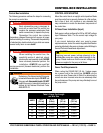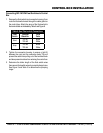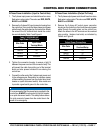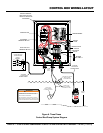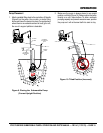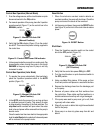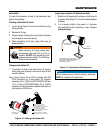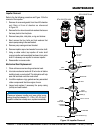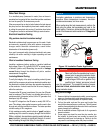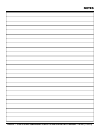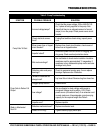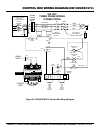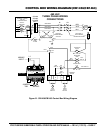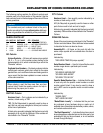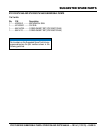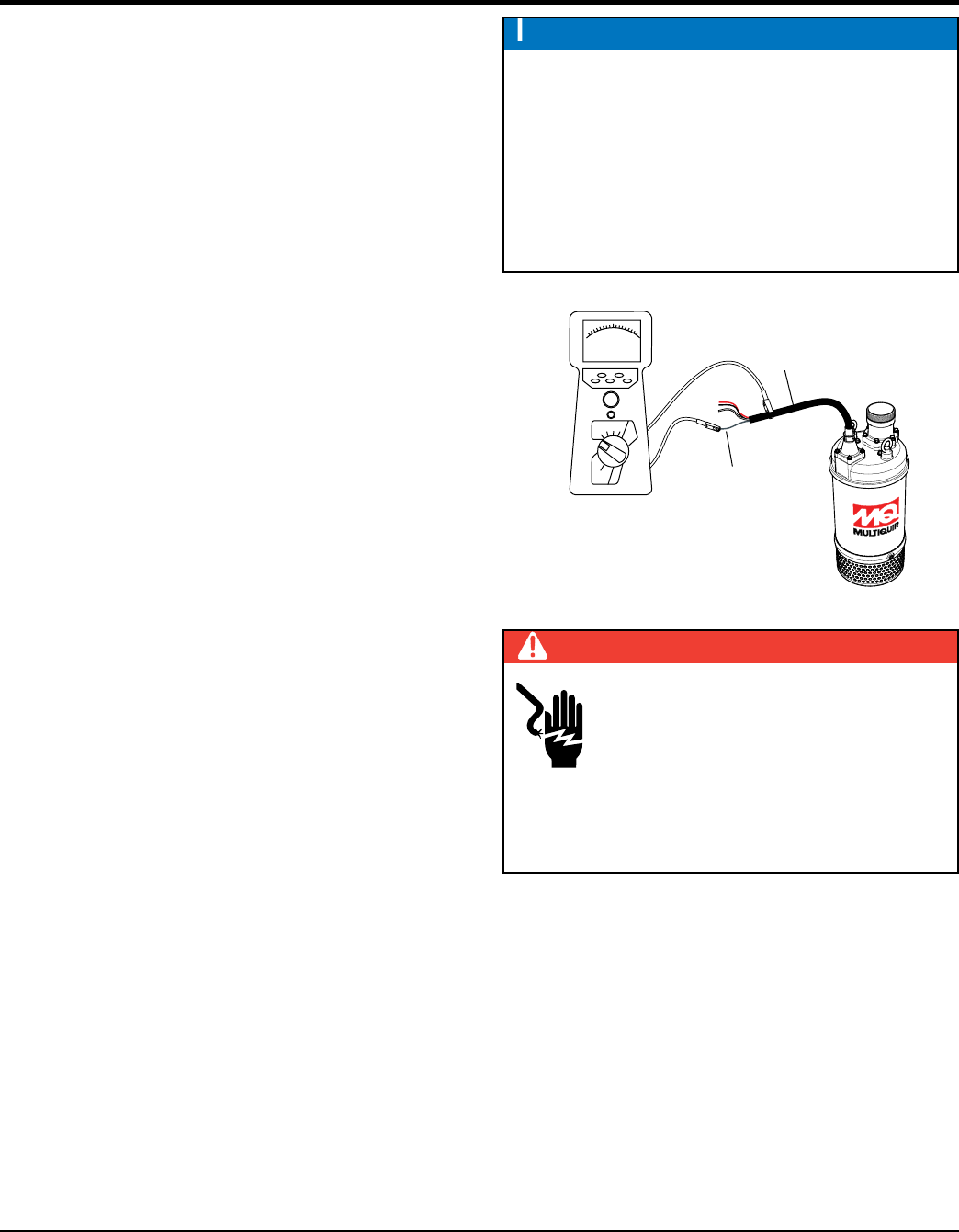
MAINTENANCE
If an installed pump (immersed in water) has not been in
operation for a long period of time, check the insulation resistance
and run the pump for 30 minutes every month.
If the pump cannot be run due to lack of water in the tank inspect
the pump and turn the impeller by hand each month and prior
to putting the pump back into service. If insulation drops below
10 megohms, contact an authorized Multiquip service center.
Why perform electrical insulation testing?
Electrical insulation starts to age as soon as it is made. Harsh
environments, especially those with extreme temperature
changes and/or chemical contamination, cause further
deterioration of the insulation (power cord).
As a result, personnel safety (electrocution/shock) and power
reliability can suffer resulting in higher operating cost and
maintenance.
What is Insulation Resistance Testing
Insulation resistance testing applies a regulated stabilized
high voltage (Figure 19), typically 500 VDC or greater across
a dielectric (power cord). Measuring the amount of leakage
current flowing through the dielectric will yield a resistive
measurement in megohms.
Insulating Material Testing
To verify the integrity of the pump's insulating material (power
cable) it will be necessary to perform an electrical insulation test.
Any electrical insulation must have the opposite characteristic
as the conductor: it should resist the flow of current, keeping it
within the conductor.
To measure the IR (current x resistance), the use of an IR tester
must be employed. This IR tester is a portable device that is a
resistance meter (ohmmeter) with a built in DC generator that
develops a high DC voltage.
The high DC voltage from the IR tester is usually 500 VDC or
more. This voltage, when applied causes a small current to flow
through and over the insulation's surfaces. The tester provides
a direct reading of IR in megohms.
A high resistance reading would indicate a "good" insulation,
meaning very little current is escaping through
the insulation.
While a relatively low resistance reading would indicate a
poor insulation, meaning a significant amount of current
may be leaking through and along the insulation.
Figure 19. Insulation Tester Application
1. Area must be free from excessive humidity, corrosive gases,
vapors or vibrations which might damage the pump.
2. Store pump in a vertical position on a pallet or stand.
3. Coil up the cable, and seal the open end (control box
wires) with waterproof tape or a cable cap. This will prevent
moisture from penetrating into the motor which could cause
severe damage to the windings.
4. Give all unpainted surfaces a light coat of oil or grease to
prevent corrosion.
5. If new pumps are stored for more than two months, turn
the impeller by hand every two months to prevent the
mechanical seal faces from seizing up. Failure to do this
may result in seal damage when the pump is started.
NOTICE
Insulation resistance is moisture and temperature
sensitive. When temperature increases, insulation
resistance decreases, and vice versa.
When performing this test measurement, perform the
test using the same test parameters as used in the
initial testing. Contact an authorized Multiquip service
center if the measured cable insulation is 10 megohms
or less.
V
OFF
20M
MEGGER™
SET
UP
M
K
GROUND WIRE
(GREEN)
500 VDCINSULATION
TESTMETER
POWER CABLE
INSULATION
Read and follow the manufacturer's user's
manual prior to operating insulation tester
(megaohm meter). This meter generates
a test voltage of 500 volts or greater. Only
qualified and trained personnel should
use this equipment. The possibility exists of severe
electrical shock, electrocution even death, when
using insulation tester.



